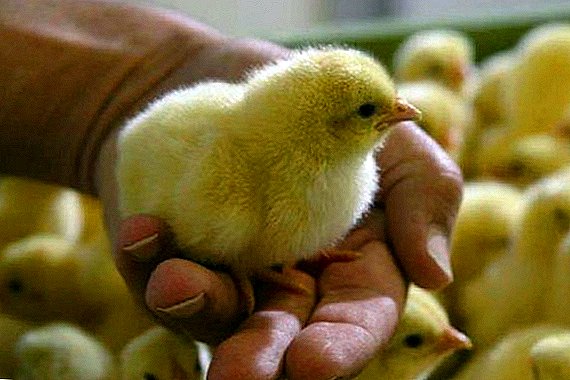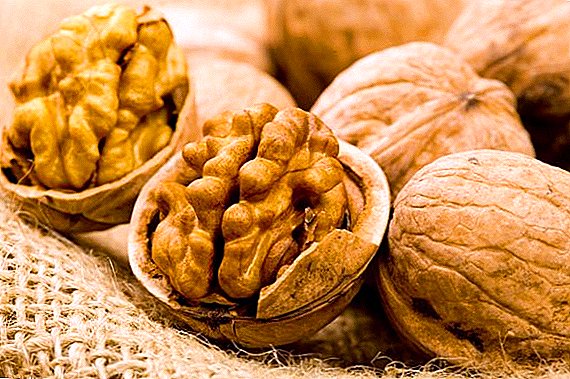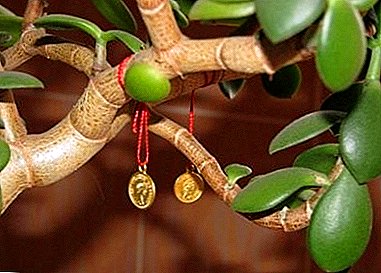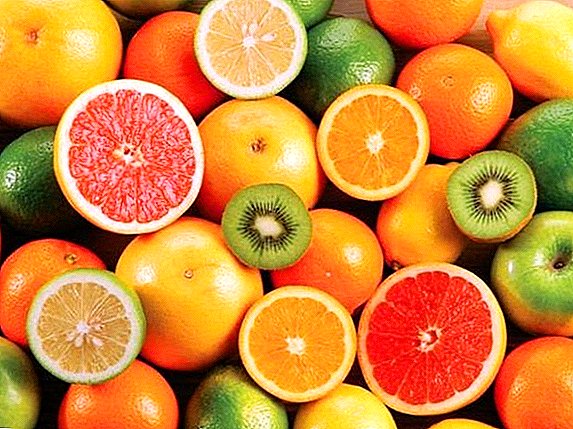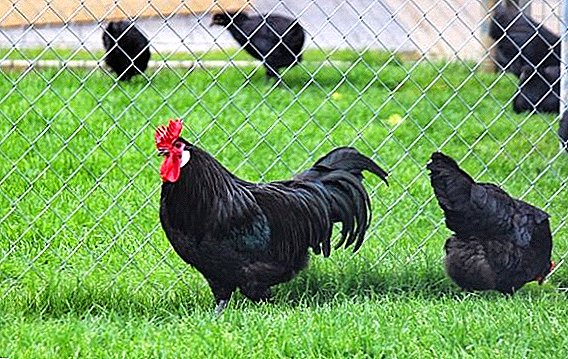 Egg and meat breed chicken Augsburger is not very well known in the territory of the former USSR, and in fact these birds are distinguished not only by good productivity, but also by a rather spectacular appearance.
Egg and meat breed chicken Augsburger is not very well known in the territory of the former USSR, and in fact these birds are distinguished not only by good productivity, but also by a rather spectacular appearance.
This publication will help fill the gaps in knowledge about this remarkable breed.
Breed breeding
The history of this breed is interesting. Chicken with an unusual scallop brought in 1870 by the German breeder Meyer from the Bavarian city of Augsburg. For breeding Augsburg chickens were used Italian breed Lamotte and French la flush.  However, at the state level, the Augsburgers were not recognized as a breed, since their offspring did not always inherit the features of the parents. Nevertheless, these chickens were bred in German farms, and after World War II, the standard of augsburgers was officially approved.
However, at the state level, the Augsburgers were not recognized as a breed, since their offspring did not always inherit the features of the parents. Nevertheless, these chickens were bred in German farms, and after World War II, the standard of augsburgers was officially approved.
Did you know? The smallest breed of chickens is considered to be the serama bred in Malaysia. The weight of the serama rooster usually does not exceed 500 grams; the hens weigh no more than 300 grams. They carry eggs the size of quail. As a rule, these birds are kept as pets, aided by their rather unusual appearance.
Description and Features
The appearance of augsburgers invariably attracts attention. There are these birds and other features, beloved poultry farmers. Consider them in more detail. 
Appearance and physique
The constitution of augsburgers is harmonious, the body is raised. The roosters have developed muscles, the chickens have a stomach, the breast of both sexes is bulging, the neck is long, and the eyes are brown. On the head there is a characteristic double red scallop, which with some imagination can be represented by butterfly wings or a crown. In roosters, this feature is more pronounced. There are also white lobes and red earrings. The bird's color is black with a bluish edging, the limbs are gray, the shin is well developed.
Read also about other meat and egg breeds of chickens: Maran, Amrox, Bress Gali, Plymouth, Krecker, New Hampshire, California Gray, Galan, Legbar, Welsumer, Lakenfelder, Barnevelder.
Character
The dominant traits of augsburgers are the lack of aggressiveness, livability with other poultry and consistently calm behavior. In addition, these chickens are not afraid of people and do not differ excessive curiosity. 
Hatching instinct
This instinct is fully developed in augsburgers. Chicken chicks hatch without problems, and the percentage of hatched and survivors is usually higher than during incubation.
Performance Indicators
As for the productivity of the breed, it differs quite high rates, namely:
- Rooster weight reaches 3 kg;
- chicken weight - up to 2.5 kg;
- chickens begin to nest during the period from the 6th to the 7th month of life;
- standard egg production is 230 eggs per year;
- egg weight on average is 60 grams;
- the shell is white.
Important! In each subsequent year of life, the laying egg production rate is reduced by at least 10%, up to the complete cessation of this function, therefore they are usually kept for no more than three years. In addition, during the molting period, the hens temporarily stop laying eggs.
What to feed
The diet of augsburgers is standard for hens of the egg-and-meat type, some special foods or a special diet for them is not required. 
Chickens
Feeding chickens has this sequence:
- Freshly hatched chickens are fed with crushed yolk of boiled chicken eggs.
- The very next day, you can add high-quality cottage cheese and millet to your diet.
- Subsequently, finely chopped greens are added, and grated vegetables, such as beetroot, cucumber, zucchini and pumpkin, are gradually mixed into the feed.
In the first week they feed often, the optimal amount of feed is six times a day. Then the frequency of feeding is gradually reduced. 
Adult chickens
To ensure the best egg production in laying hens, it is better to feed with specialized compound feeds. But generally this breed powerless, grain mixtures, for example, wheat, barley, oats and corn in equal proportions, will also work perfectly. Freshly mowed grass should be added to the feed; in winter it is replaced with hay. In addition, in small amounts (no more than 5% by weight of the feed) meat and bone meal or fish meal, as well as chalk (no more than 3%) are mixed into the feed.
Learn more about the nutrition of laying hens: how to prepare feed, what vitamins are needed.
If necessary (for example, if there is no green in the diet), vitamin or mineral supplements are added to the feed. If there is no free range of birds, then the feeder should add gravel (10-15 g per individual per week) - it contributes to the grinding of food in the chicken's stomach and ultimately normal metabolism.
Did you know? In 1956, a chicken named Blanche of the leggorn breed laid a record egg weighing 454 g. This egg had two yolks and a double shell.
Content Features
The conditions of detention Augsburg chickens are undemanding, but to ensure good productivity you need to create a certain environment for them. 
In the chicken coop with walking
Harsh conditions do not like the Augsburgers. The coop must be equipped according to following rules:
- For keeping this breed in a room, low perches are set up (about 50 cm from the floor), at the rate of three hens per meter of roost.
- There should be no drafts in the hen house, it should be warmed, equipped with ventilation, and provided with a water bowl and a feeding trough.
- Nests equip one nest for six layers.
- There must be a litter on the floor.
- In winter, it is necessary to maintain the temperature in the room not lower than +5 ° С, therefore, in areas with cold climates, heating may be required.
Important! The optimal conditions of detention are +23 temperature.… +25 °With a humidity not higher than 75%. Disinfection with full cleaning in the hen house is carried out with a change in the livestock, but at least once a year. In addition, this procedure is necessary if there are diseased chickens - it is carried out both during the illness and after the cessation of the outbreak of the disease.
Is it possible to breed in cages
Breeding in the cells of this breed is not recommended. The best option is to keep them in the coop with the organization of free-range. 
Advantages and disadvantages of the breed
Of merits Augsburg chickens include the following:
- good, though not record egg production;
- undemanding to conditions of detention;
- well-developed incubation instinct;
- calm character;
- spectacular appearance.
Any pronounced deficiencies this breed does not. It can be called perhaps the need to organize walking for the birds and the problems with the acquisition of eggs for incubation or chickens in our area.  As we see, Augsburgers with their rather unusual appearance are unpretentious birds, their content does not present any difficulties. At the same time, they are characterized by good productivity and calm character. So if such a bird is found on sale, it makes sense to experiment with its content.
As we see, Augsburgers with their rather unusual appearance are unpretentious birds, their content does not present any difficulties. At the same time, they are characterized by good productivity and calm character. So if such a bird is found on sale, it makes sense to experiment with its content.




